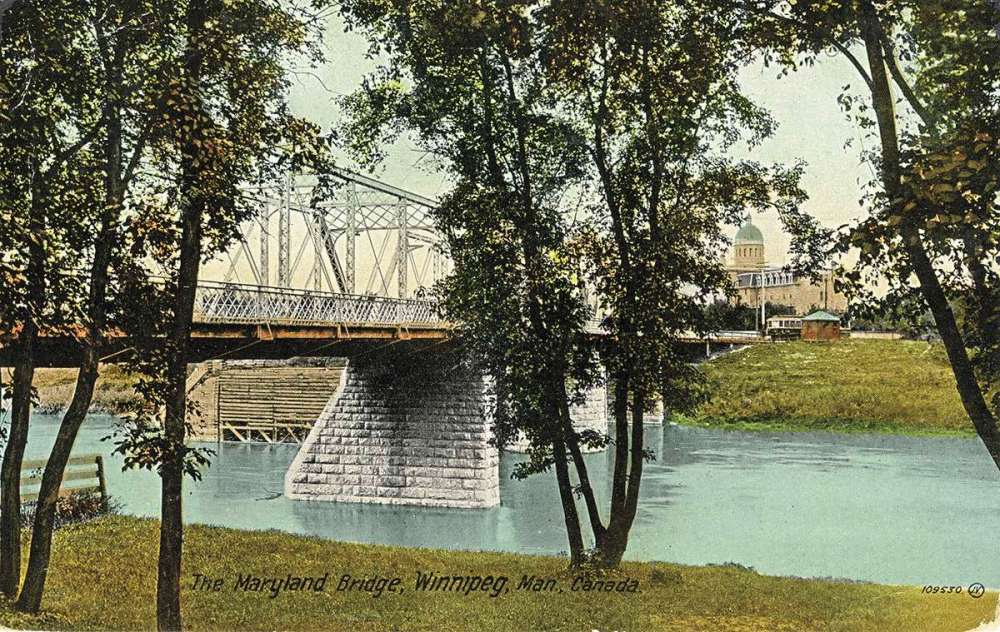How Wolseley remains unabridged
Advertisement
Hey there, time traveller!
This article was published 06/06/2016 (3466 days ago), so information in it may no longer be current.
Thoughts wander like feet as you promenade the Wolseley-Wellington loop.
Picture what once was here and speculate on proposed paths never taken. Take, for example, bridges over the Assiniboine River…
Wolseley/Raglan over Omand’s Creek — Remember defeating the Olympian proposal (part of the Active Transportation-Infrastructure Stimulus Program) for a bigger, higher, longer creek crossing?

Palmerston/Aubrey – Wellington/Waverley — “Put a bridge at Aubrey for access to [the] centre of River Heights….” a citizen commented at the specially convened community meeting on the Omand Park Bridge replacement plan (above), March 18, 2010.
It was not a new idea but it was compelling. An “Aubrey Pedestrian Bridge” would conveniently bisect the Wolseley-Wellington loop. Presumably it could be integrated with the 1957 aqueduct spanning the Assiniboine here.
A proposal for a vehicular bridge at this location was before city committees in 1912 and 1949-1950. The first proposal was to re-erect, at Aubrey, the superstructure of the then-Osborne Bridge to serve “the district south of the river about Cambridge street…destined to fill up very quickly.” (Winnipeg Free Press, January 6, 1912).
When the crossing was discussed 37 years later, detractors argued for prioritizing a crossing at Donald, Smith or Hargrave streets to relieve bottlenecks in the city centre.
Palmerston/Arlington – Wellington/Harrow — In 1911-1912, Wolseley residents protested another proposal. The Arlington Bridge would have linked Arlington and Harrow. The structure in north Winnipeg, then being completed, was the “Brown and Brant Street Bridge”.
Historian Christian Cassidy explained:
“As a way to make the (North End) bridge project more palatable, the idea was to make Arlington Street, which changed names to Brown Street north of Notre Dame and Brant Street north of the CPR tracks, a second north-south route across the entire city and its immediate suburbs.
“One of the remnants of the plan was that the entire stretch of road was renamed Arlington Street. The only bridge to be built along the route became known as Arlington Bridge.”
A south-side Arlington Bridge was again seriously considered in 1929. Its proximity to the Maryland Bridge (efficient and relatively new) was a drawback. Days before the market crash, Dominion Street and Greenwood Place — streets further west — were bandied about as links to the “large and rapidly growing River Heights community” (Winnipeg Tribune, October 16, 1929).
Former Maryland Bridges — In 1894, the first steel truss bridge over the Assiniboine connected Maryland to parts south. Some people will recall its successor, an elegant concrete-arched crossing (1921-1969), memorialized in the monument south of today’s west span.
Gail Perry is a community correspondent for Wolseley. She can be reached at: gailperry.writer@gmail.com




